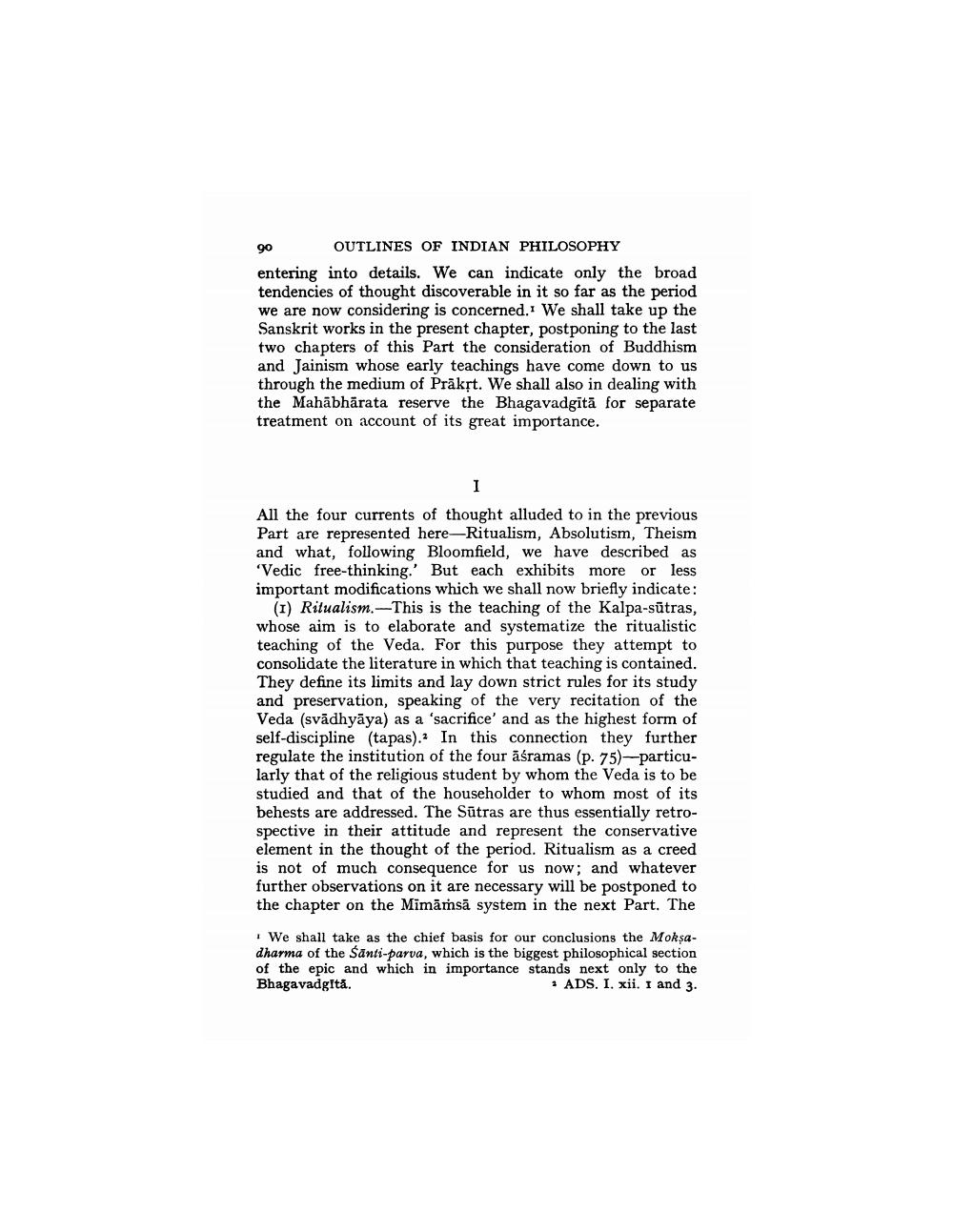________________
90
OUTLINES OF INDIAN PHILOSOPHY entering into details. We can indicate only the broad tendencies of thought discoverable in it so far as the period we are now considering is concerned. We shall take up the Sanskrit works in the present chapter, postponing to the last two chapters of this part the consideration of Buddhism and Jainism whose early teachings have come down to us through the medium of Prakrt. We shall also in dealing with the Mahābhārata reserve the Bhagavadgitā for separate treatment on account of its great importance.
1
All the four currents of thought alluded to in the previous Part are represented here—Ritualism, Absolutism, Theism and what, following Bloomfield, we have described as 'Vedic free-thinking.' But each exhibits more or less important modifications which we shall now briefly indicate:
(1) Ritualism. This is the teaching of the Kalpa-sūtras. whose aim is to elaborate and systematize the ritualistic teaching of the Veda. For this purpose they attempt to consolidate the literature in which that teaching is contained. They define its limits and lay down strict rules for its study and preservation, speaking of the very recitation of the Veda (svādhyāya) as a 'sacrifice' and as the highest form of self-discipline (tapas). In this connection they further regulate the institution of the four āśramas (p. 75) ---particularly that of the religious student by whom the Veda is to be studied and that of the householder to whom most of its behests are addressed. The Sūtras are thus essentially retrospective in their attitude and represent the conservative element in the thought of the period. Ritualism as a creed is not of much consequence for us now; and whatever further observations on it are necessary will be postponed to the chapter on the Mimāṁsā system in the next Part. The
We shall take as the chief basis for our conclusions the Moksadharma of the Santi-parva, which is the biggest philosophical section of the epic and which in importance stands next only to the Bhagavadgita.
1 ADS. I. xii. I and 3.




